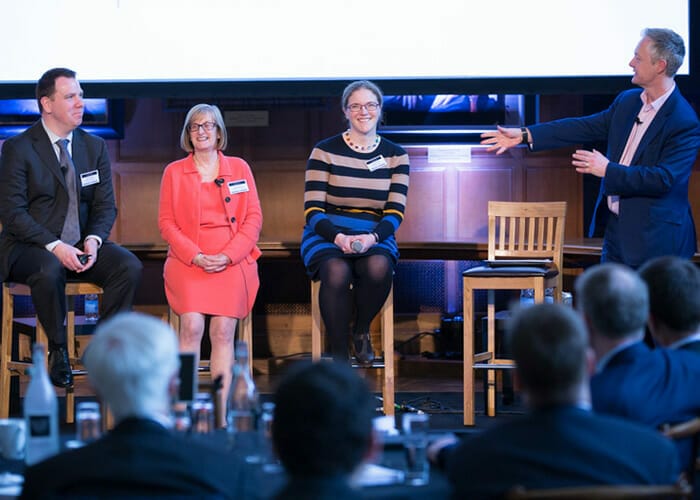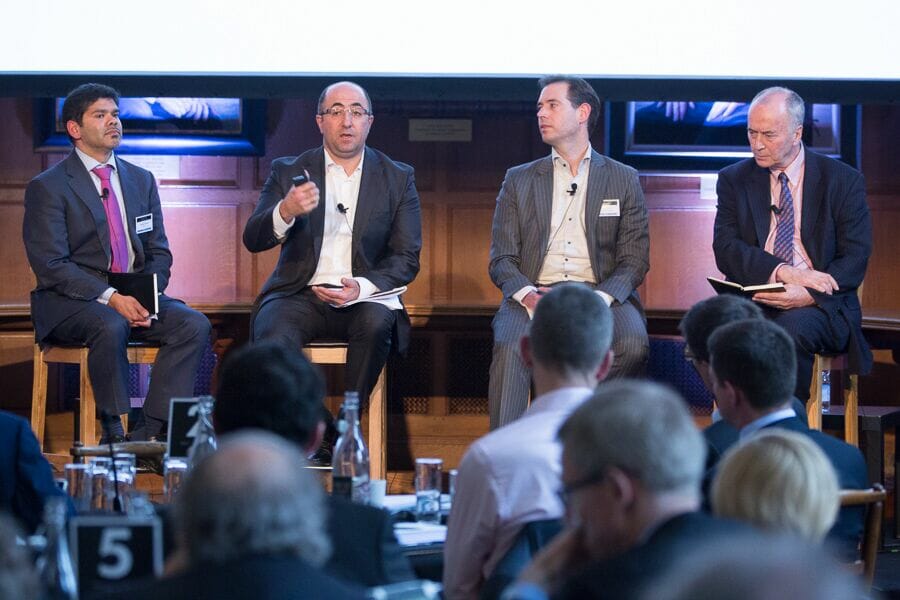Combining individual pension funds into larger pools brings benefits in scale, governance, certainty for contributors and cost savings. But it is a highly complex process that involves much more than setting up a new asset manager and transferring the assets to a single pot.
That was the message from a panel of chief executives from new asset owners at the Fiduciary Investors Symposium at the University of Oxford in April.
Pooling requires building a new culture and careful management of the relationship between the public-sector pension funds in the pool and the new private-sector asset manager investing on their behalf said experts from the UK, where the government is pooling 89 separate local authority schemes into eight mega funds, and Canada, where the C$60 billion ($47 billion) Investment Management Corporation of Ontario (IMCO) was set up last year and now manages assets for two public-sector pension funds.
In the UK, the £12.8 billion ($17.4 billion) Local Pensions Partnership (LPP) was the first of the eight planned mega funds. It has been operational since 2016, following a collaboration between Lancashire County Council and the London Pensions Fund Authority.
“You are a private-sector animal owned by the public sector,” LPP chief executive Susan Martin said. “This is a strong dynamic that needs managing and the engagement side with stakeholders is huge.”
From the bottom up
Building a new organisation requires a new culture that should be informed by incorporating perspectives gathered from the bottom-up, Martin said.
“We met managers and executives and had a great debate about culture and ideas, but it is also important to get some bottom-up perspective and build something everyone buys into,” she said. “It’s two years of hard work.”
The UK’s Boarder to Coast Pension Partnership is taking a similar approach, calling on staff to help create the culture that will shape the business, chief executive Rachel Elwell notes. Border to Coast comprises 12 partner funds with £50 billion ($68 billion) in assets under management. Elwell is midway through a recruitment drive that will result in a team of 70.
“It’s up to the people we recruit [to help determine] what our culture is, and they need to take ownership of it. It’s a great way to start a new business,” she said.
Balancing the different relationships, as both an investor and an organisation that is ‘owned’ by the funds in the pool, is another challenge. Asset management organisations need to set up processes and forums to manage the different relationships separately.
Panellists also flagged the gap between public- and private-sector thinking on building a brand. New investors need to market themselves to attract human capital, but also to build relationships with other asset managers and market their investment capital to gain access to the right opportunities. Yet public-sector organisations can be “touchy owners” that often don’t see money and time spent on marketing as that important.
Trade-offs
Getting the culture right within a new organisation can sometimes mean turning away potential clients of the pension fund. New clients need to have the same values and ways of thinking as incumbents, and existing clients need to agree that the trade-off between returns and the new capacity and scale that comes with extra capital is worth it. At one fund, these differences were resolved by new clients and existing investors meeting and “identifying similar issues”. Adding new clients to the pool doesn’t always work.
“We walked away from three opportunities to grow because we couldn’t see how we could add value to our current clients,” LPP’s Martin said.
IMCO has two clients but will add more in coming years, targeting $100 billion AUM in the next five years from Ontario institutions like universities and utilities.
“We have to think about what new clients will bring to the table and the work involved in setting them up as a client,” said Neil Murphy, vice-president, corporate communications, at IMCO.




